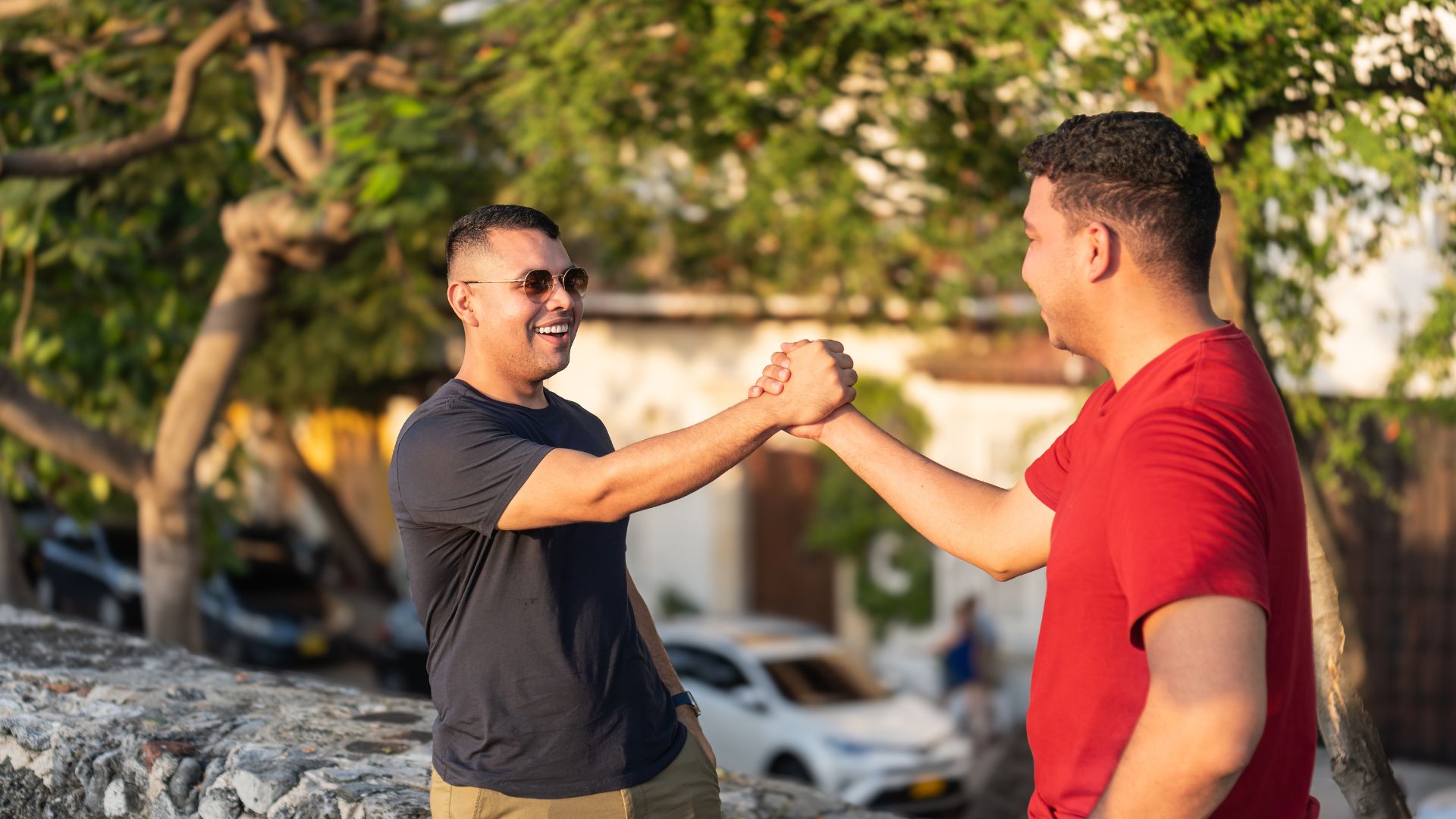When you learn different ways to say ‘good afternoon’ in Italian, you’re diving into more than just words. These phrases show you how Italians interact based on formality, the setting, and who they’re talking to. It’s all about the relationship between language and culture. So, by using these expressions, you improve your Italian and get a better feel for how Italians communicate. Now, why does this matter? Well, using these greetings the right way can help you connect with Italians more genuinely. Let’s look into why these greetings are important.
Ways to Say Good Afternoon in Italian
Formal Afternoon Greetings in Italian

| Italian | English Translation |
|---|---|
| Buon pomeriggio | Good afternoon |
| Salve, buon pomeriggio | Hello, good afternoon |
| Buon pomeriggio a Lei | Good afternoon to you (formal) |
| Buon pomeriggio, signore | Good afternoon, sir |
| Buon pomeriggio, signora | Good afternoon, madam |
| Buon pomeriggio, signori | Good afternoon, gentlemen |
| Le auguro un buon pomeriggio | I wish you a good afternoon |
| Un cordiale buon pomeriggio | A cordial good afternoon |
| Un rispettoso buon pomeriggio | A respectful good afternoon |
| Buon pomeriggio a tutti | Good afternoon to everyone |
| Buon pomeriggio, dottore | Good afternoon, doctor |
| Buon pomeriggio, avvocato | Good afternoon, lawyer |
| Buon pomeriggio, professore | Good afternoon, professor |
| Buon pomeriggio, ingegnere | Good afternoon, engineer |
| Le porgo i miei saluti di buon pomeriggio | I extend my good afternoon greetings to you |
| Buon pomeriggio, gentili ospiti | Good afternoon, dear guests |
| Buon pomeriggio, stimati colleghi | Good afternoon, esteemed colleagues |
| Buon pomeriggio, signor direttore | Good afternoon, Mr. Director |
| Con i migliori auguri di un buon pomeriggio | With best wishes for a good afternoon |
| Che abbia un buon pomeriggio | May you have a good afternoon |
If you’re speaking Italian in the afternoon, especially in a formal setting like a business meeting or a formal event, it’s polite to say ‘Buon pomeriggio,’ which means ‘Good afternoon.’ You’d use it from 2:00 PM until 6:00 PM. It’s a bit more formal than ‘Buongiorno’ (Good morning) or ‘Buona sera’ (Good evening). You’ll hear it a lot in professional settings in Italy, and also on radio and TV. Knowing when to use ‘Buon pomeriggio’ shows respect and helps you fit in with the local culture.
Informal Afternoon Greetings

| Italian Greeting | English Translation |
|---|---|
| Ciao! | Hi! / Hello! |
| Buon pomeriggio! | Good afternoon! |
| Ehi! | Hey! |
| Come va? | How’s it going? |
| Che fai? | What are you up to? |
| Ciao, come stai? | Hi, how are you? |
| Tutto bene? | Is everything good? |
| Ehi, cosa c’è di nuovo? | Hey, what’s new? |
| Come butta? | How’s it going? (Very casual) |
| Ciao, che si dice? | Hi, what’s up? |
| Salve! | Hello! |
| Come va il pomeriggio? | How’s the afternoon going? |
| Ehi, tutto a posto? | Hey, all good? |
| Ciao, cosa fai di bello? | Hi, what are you doing? |
| Come stai passando il giorno? | How’s your day going? |
| Che si dice? | What’s happening? |
| Buona giornata! | Have a good day! |
| Ciao, come va la vita? | Hi, how’s life? |
| Ehi, che novità? | Hey, what’s new? |
| Ciao, come va il pomeriggio? | Hi, how’s your afternoon? |
This table includes various informal Italian greetings that you can use in the afternoon, along with their English translations. These phrases are perfect for casual and friendly conversations.
‘Good afternoon’ in Italian can be quite formal with ‘Buon pomeriggio’. But when chatting with friends, you might hear ‘Come va la giornata?’ which simply means ‘How’s your day going?’
If you’re saying goodbye but plan to see each other later, you might say ‘Ci vediamo più tardi!’, or ‘See you later!’ And if you want to wish someone well for the remainder of the day, you can use ‘Buon proseguimento!’, which means ‘Enjoy the rest of your day!’. These phrases help keep things light and personal when talking day-to-day.

Responses to “Good Afternoon” in Italian
When someone says ‘Buon pomeriggio’ in Italian, your reply depends on the situation.
In formal settings like business meetings or professional emails, it’s common to respond with ‘Buon pomeriggio anche a Lei,’ which means ‘Good afternoon to you too,’ using the formal ‘Lei’.
Formal Italian Responses
| Italian Response | English Translation |
| Buon pomeriggio, come posso aiutarla? | Good afternoon, how may I assist you? |
| Buon pomeriggio, spero stia passando una bella giornata. | Good afternoon, I hope you’re having a nice day. |
| Grazie per il suo messaggio, buon pomeriggio! | Thank you for your message, good afternoon! |
| È un piacere risentirla, buon pomeriggio. | It’s a pleasure to hear from you again, good afternoon. |
| Spero che il suo pomeriggio sia produttivo. | I hope your afternoon is productive. |
| Buon pomeriggio, signore/signora. | Good afternoon, sir/madam. |
| Che le sia un pomeriggio sereno. | May you have a peaceful afternoon. |
| Come sta procedendo il suo pomeriggio? | How is your afternoon progressing? |
| Le auguro un pomeriggio pieno di successi. | I wish you an afternoon full of success. |
| Grazie, le auguro anche a lei un buon pomeriggio. | Thank you, I also wish you a good afternoon. |
In casual settings with friends or colleagues, you might say ‘Grazie, anche a te!’ which translates to ‘Thanks, to you too!’
Casual Responses in Italian
| Italian Response | English Translation |
| Buon pomeriggio anche a te! | Good afternoon to you too! |
| Come va questo pomeriggio? | How’s this afternoon going? |
| È sempre un piacere vederti. | It’s always a pleasure to see you. |
| Che piacere sentirti! | How nice to hear from you! |
| Spero che il tuo pomeriggio sia rilassante. | I hope your afternoon is relaxing. |
| Sì, sta andando tutto bene, grazie! | Yes, everything is going well, thank you! |
| Un pomeriggio meraviglioso, vero? | A wonderful afternoon, isn’t it? |
| Che bella giornata oggi, no? | What a beautiful day today, isn’t it? |
| Finalmente possiamo chiacchierare un po’! | Finally, we can chat a bit! |
| Il mio pomeriggio è migliore ora che ti ho sentito. | My afternoon is better now that I’ve heard from you. |
You can also add a bit more by saying ‘Grazie, spero anche tu stia passando un buon pomeriggio!’ meaning ‘Thank you, I hope you’re also having a good afternoon!’ These responses show how context influences the way Italians communicate.
Conclusion
To wrap it up, learning different ways to say ‘good afternoon’ in Italian really helps you get better at the language and understand the culture better. These greetings are more than just words; they help you connect respectfully and meaningfully with others. They show how important context and knowing the person is in Italian conversations. By using these phrases, you can get better at handling social situations and really get the nuances of Italian manners. This makes your whole experience with the Italian language and culture much richer. Keep visiting The Translation Blog for more informative articles like this.

